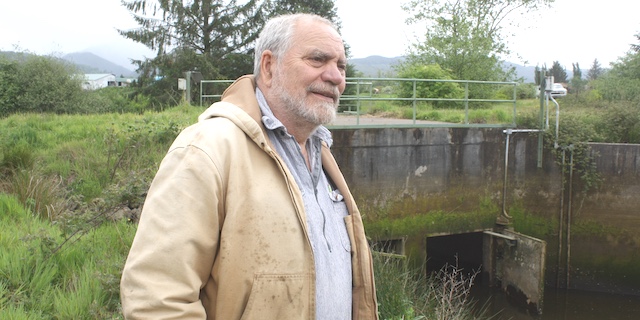Vole mapping system uses drones, artificial intelligence
Published 5:47 pm Monday, January 3, 2022

- A new Vole Mapping System developed by Wilbur-Ellis is helping growers isolate areas of high vole pressure in seed fields.
Grass seed growers have a new option to help identify vole pressure ahead of crop loss and even isolate where pressure is greatest.
Through the use of drone imagery and artificial intelligence, growers can now zero in on vole pressure to help determine if treatment is necessary and pinpoint spots of high vole activity by mapping vole holes.
Devesh Singh, a technical agronomist for Wilbur-Ellis who helped develop the system with the commercial drone service AeroTract, said the system is designed to reduce treatment costs and improve vole management programs.
“We wanted to better quantify the pressure, determine whether it is going to have a major economic impact on the crops, and then convert that knowledge into something tangible that we could hand over to the grower to act on,” Singh said.
A periodic problem, voles in the last two years have cost Oregon grass seed growers hundreds of millions of dollars in crop loss and treatment costs, according to Steve Salisbury, research and regulator coordinator for the Oregon Seed Council. Equipping growers with a better tool for gauging vole pressure would be a valuable addition to current vole-management programs, he said.
The principals behind the Vole Mapping System first tested it in a tall fescue field in the fall of 2020, and it immediately showed merit, Singh said. The drone uncovered many more holes than a ground crew had found by walking the field.
After hundreds of additional hours of research and development, which involved among other improvements, zeroing in on specifics like optimum speed and height to fly the drone, the system was ready to go, and, in the winter of 2021, growers began contracting with the company to use the system.
To date, all reviews have been positive, Singh said.
Tony Stroda, of Stroda Brothers Farms in Monroe, Ore., for example, said that in one field, he paid for the use of the drone just in the money he saved in bait costs.
Also, Stroda said, the Vole Mapping System enables him to send ground crews to specific spots in a field during winter months when above-ground baiting is prohibited.
“By not having to walk the whole field, you can just go to targeted areas, get over a lot more ground and save a lot of labor,” Stroda said.
Tanner Hendricks, a technical services specialist for Wilbur-Ellis, said “ground-truthing” has shown that the system consistently provides a more accurate assessment of vole pressure than any ground-level evaluations.
“As far as the accuracy of the drone, it has been incredibly accurate in all of our ground-truthing work,” Hendricks said. “The resolution is in centimeters, so it is incredibly high-resolution imagery that we are dealing with here.”
Eventually, Singh said, the principals would like to scale up the operation and use it to variable-rate apply bait.
“What we hope to do is upload those vole maps into the drone, and the drone can go and apply the bait,” Singh said. “That is the concept we are working on.”
Singh advised growers to contact their local Wilbur-Ellis office for more information on the system or to check on its availability.






